Our bodies are continually communicating with us. From how we sleep, our appetite, energy level, digestion, mood, to our periods and monthly cycles. There is so much information at our fingertips that we could use to guide our nutrition and lifestyle choices. One way to help guide your choices is data tracking.
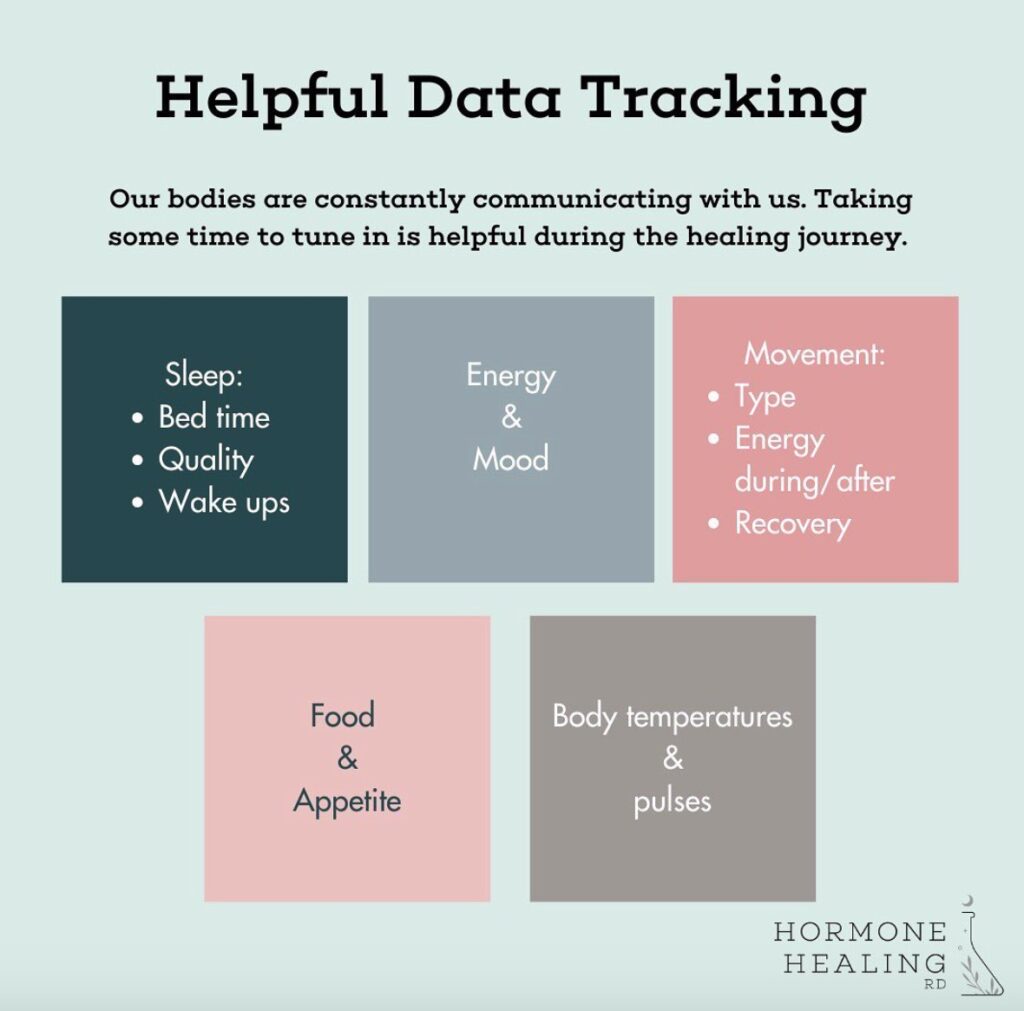
What is health data tracking?
Speaking of information at our fingertips, there is pretty much an app for everything these days. Just about every aspect of your life can be tracked using an app on a smart device (cell phone, tablet, computer/laptop, watch). Health data tracking is a collection of and analysis of your health data. The data from health tracking can be used to find patterns and/or oddities in your usual lifestyle. Most individuals are familiar with calorie tracking and fitness tracking, but many other health components can be tracked.
I often talk with women that have tracked their food before, but when I ask further about their sleep, how they feel when they wake up, their mood and energy throughout the day, or even their cycles, I am met with surprise. Health data tracking even analyzes stress and heart health. Tracking your food can be helpful (for some), but you do not really know what to change about your food without looking at all these other factors.
Are you not sleeping well?
Tracking your sleep patterns allows you to analyze the length of time, quality, and the number of wake-ups you have. The length of time you spend sleeping has a direct effect on other processes within the body. Bedtime is the body’s time to rest and recover. Maybe you go to bed at a decent hour but have trouble staying asleep. The quality of your sleep is also important. Have you ever awakened feeling like you spent the entire night fighting? You may have experienced poor sleep quality. Tossing and turning all night is an example of poor sleep quality. What happens if you awaken numerous times throughout the night? You could throw off your circadian rhythm, which plays a role in metabolism, the release of hormones, and body temperature. Sleep happens in cycles–light sleep (non-REM) and deep sleep (REM). Each sleep cycle is associated with specific brain activity. The key is getting enough sleep at the right times.
If you are not sleeping well, here are some questions to ask yourself:
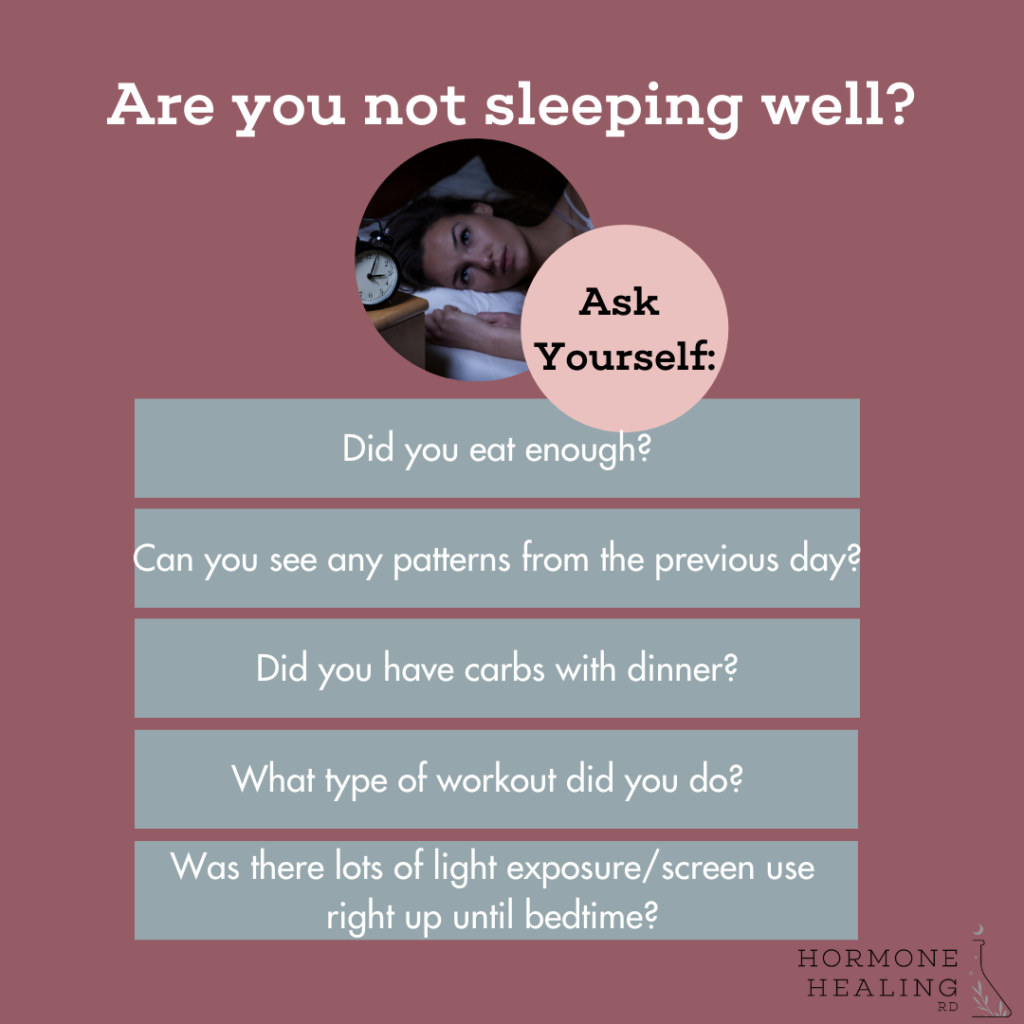
Do you have low energy in the afternoon?
Do you often fall into an afternoon slump? Do you feel tired and run down in the middle of the day? Those feelings of low energy are signals from your body. The signs can be frequent yawning, fatigue, moodiness, headaches, or changes in vision. So, precisely what are these signals telling you? Some of the afternoon slump reasons include stress, dehydration, inadequate sleep, poor eating habits, caffeine overload, or hypothyroidism.
If you experience low levels of energy in the afternoons, here are some questions to ask yourself:
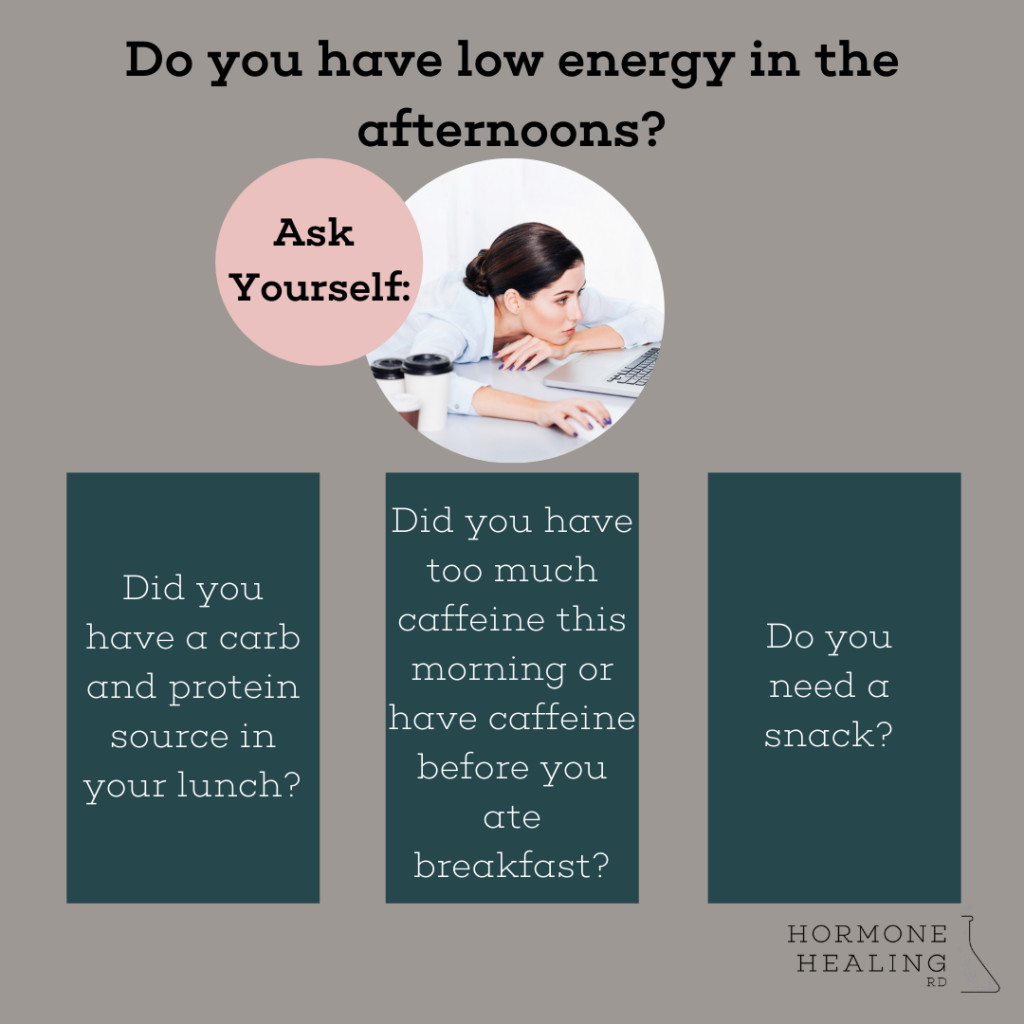
Is your body temperature low or are you always cold?
Do you have an intolerance to the cold? It is that constant feeling of coldness. Do you get tingling or numbness in your hands or feet? Maybe you find yourself shivering all of the time. Then you should start tracking your day-to-day activities to find the underlying problem. Cold intolerance can be a sign that your thyroid is not functioning properly, which means your metabolism could be off. Dr. Ray Peat explains that the conversion of T4 to T3 is decreased during hypoglycemia; therefore, heat production decreases when we are hungry. To compensate for less heat being produced, the body will reduce circulation to the skin and extremities (hands and feet) in order to preserve heat for our brain and heart.
During his research in med school, Dr. Broda Barnes found thyroid testing to be wildly inaccurate. In the past, thyroid function testing consisted of measuring basal metabolism at rest through oxygen uptake. It was later discovered that T4 could be measured followed by T3. The problem with that is it only shows up in more severe cases of thyroid dysfunction. For this reason, patients who clearly showed signs of thyroid dysfunction did not qualify for medical diagnosis. Dr. Barnes discovered that measuring the body’s temperature at rest is a great measurement of thyroid function, instead of relying on oxygen tests, which were very impractical, expensive, and inaccurate.
Basal body temperature (BBT) is your temperature at rest. Measuring your BBT first thing in the morning before you get out of bed keeps it from being impacted by digestion, stress, movement, etc. You can use any thermometer to measure BBT, however, a basal body thermometer gives a more accurate reading because it goes to the 100th degree (98.45°F vs. 98.4°F). Menstruating women’s body temperature will increase during the second half of their cycle after ovulation occurs and will be lowest during the 2nd and 3rd day of your period (typically). So, what should your BBT be? Ideally, on average, you want the first half of your cycle to be 97.6°F and the second half to be 98.4°F. When your body temperature is below this, it is a sign of less heat being produced AKA sluggish thyroid. This simple measurement can be used daily to monitor thyroid and hormone health.
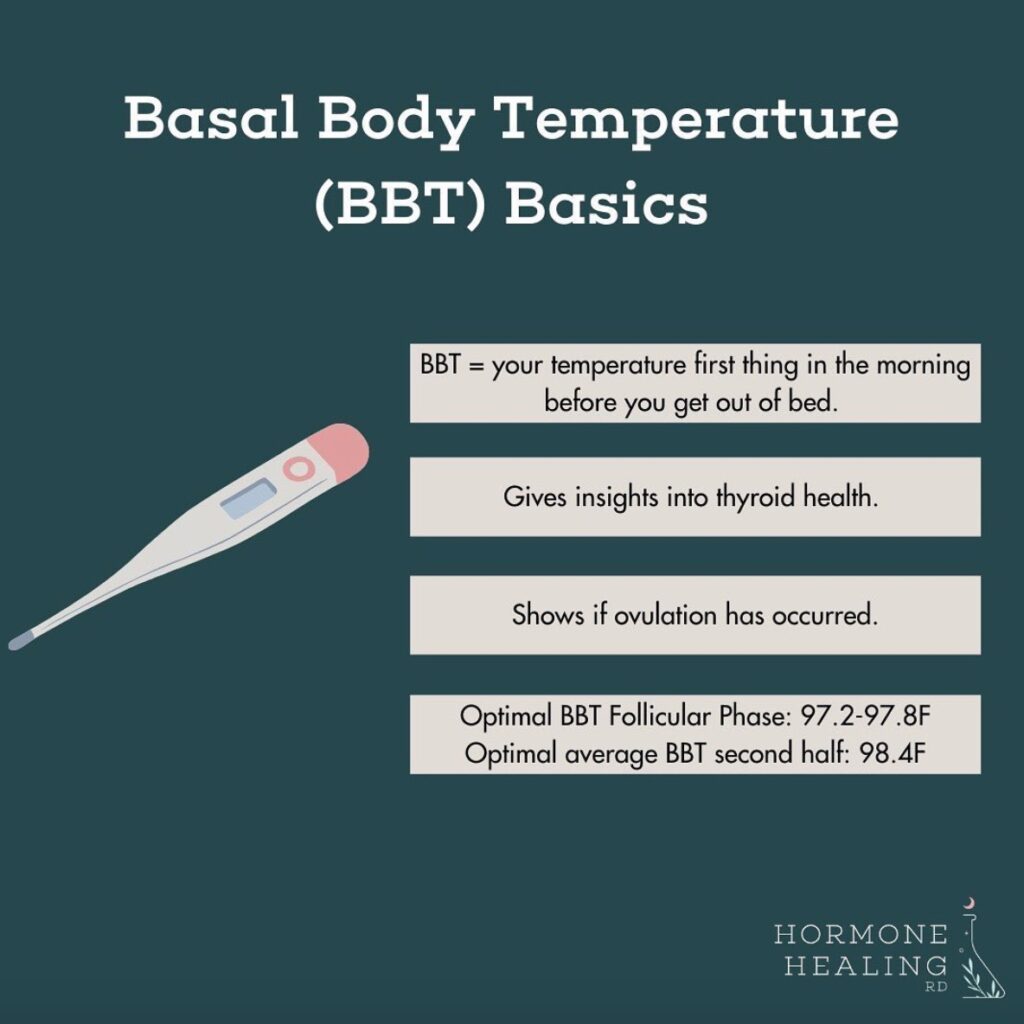
Is your pulse rate healthy?
Measuring your BBT alone is not going to be too helpful, you also have to keep a watchful eye on your pulse rate. Pulse rate is an indicator of adrenal hormone production. For healthy adults, the normal pulse range is between 60 and 100 beats per minute (bpm). Measuring your BBT and your pulse rate, together, accurately evaluates your hormone health. Together, these measurements provide an understanding of your energy production. When your body is unable to produce energy, all body systems are compromised. This creates added stress on the body. With added stress comes an increase in adrenals and cortisol, which block thyroid hormone production. Excessive amounts of stress hormones cause our body temperature to drop. Cold hands and feet are an indicator that both your temperature and pulse are low due to increased adrenaline. Acute phases of adrenaline appear when your pulses are low. In chronic cases, individuals present with BBT and low pulse. In such cases where pulse readings are high throughout the day, metabolism has shut down because they have not been regulated for quite some time.
If you are always cold and have low body temperature, here are some questions to ask yourself:
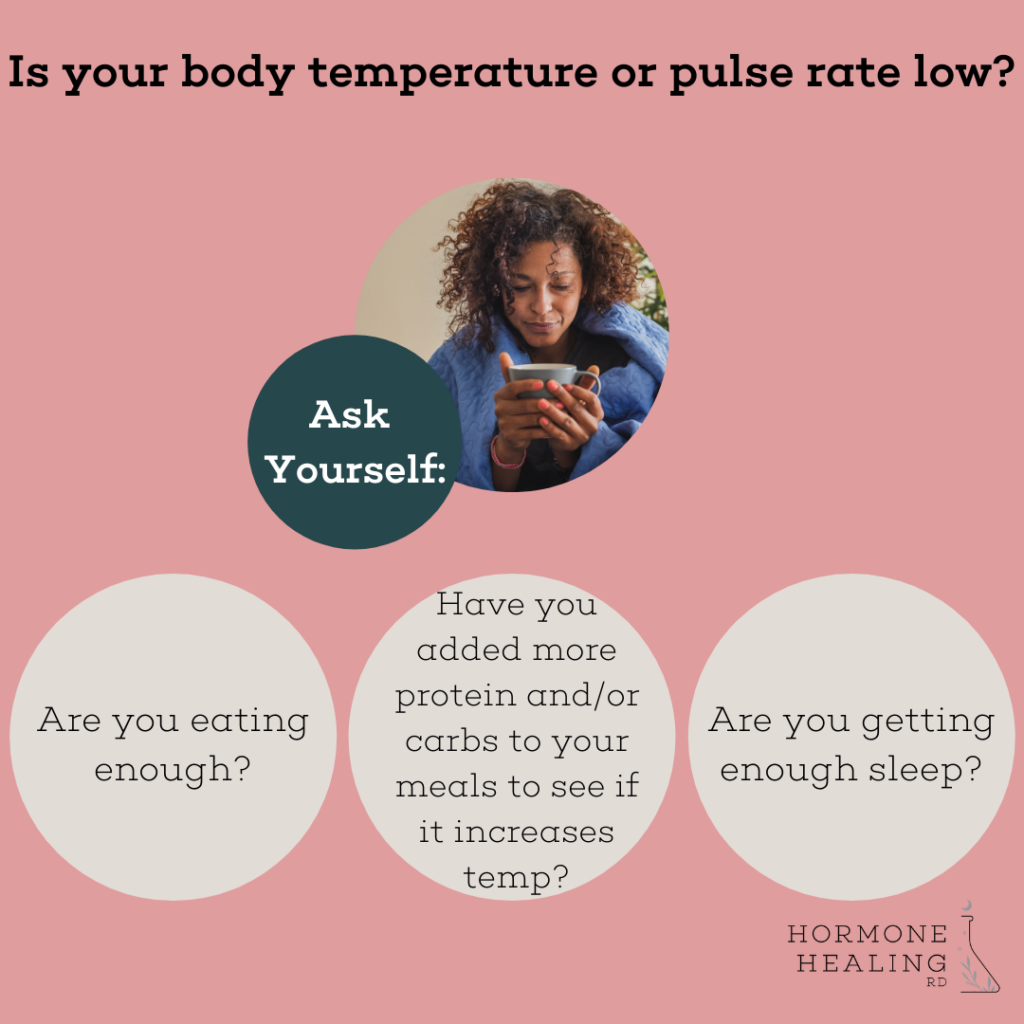
Data tracking does not have to be technically advanced. The old-fashioned way of using pen and paper works just fine. Journaling your day-to-day activities is a good way to pinpoint any unusual activity that could have led to your not-so-good feeling. If you want an even deeper look into what’s happening inside your body, check out my Master Your Minerals Course. In it, we teach you how to interpret your own HTMA and build a hormone-healing protocol based on your unique results. You will also gain access to my Hormone Healing Community to connect with likeminded women and get expert advice from me!
Photo by Filip Mroz on Unsplash
